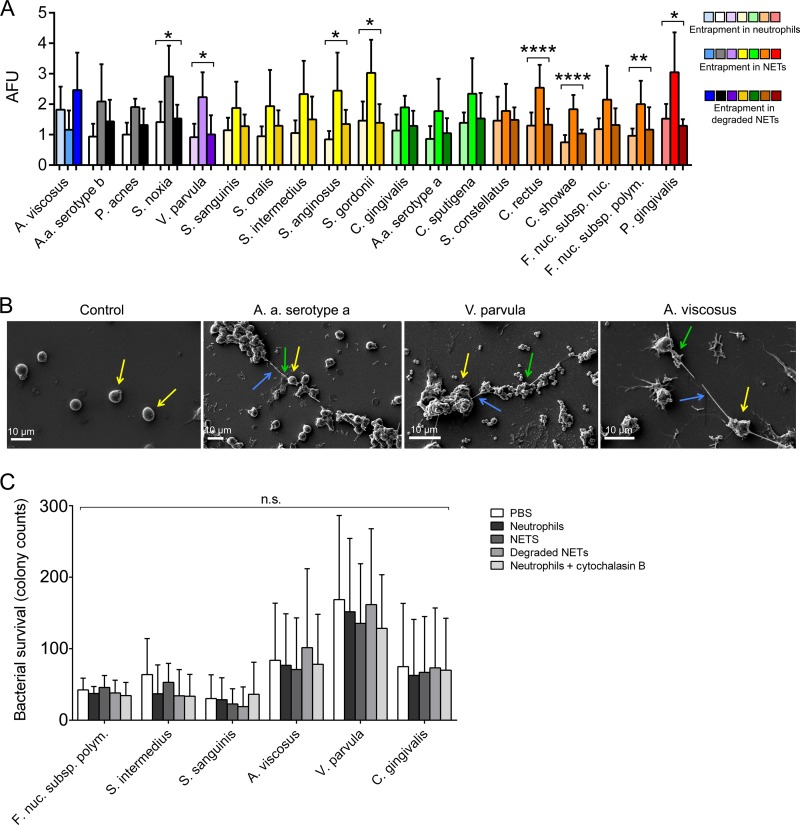FIG 3.
Neutrophil extracellular trap (NET) entrapment of periodontal bacteria. (A) NET entrapment of bacteria that were not assigned to a Socransky complex (white, gray, black), as well as purple, yellow, green, orange, red, and blue complex bacteria. Results are normalized to those for fluorescein isothiocyanate-stained bacteria in PBS. The statistical significance of bacterial entrapment by NETs relative to that of bacterial entrapment by unstimulated neutrophils and degraded NETs is shown. Data are presented as arbitrary fluorescence units (AFU). (B) Representative images of bacterial entrapment by NETs. Neutrophils (yellow arrows) incubated with PBS (control), live A. actinomycetemcomitans serotype a, V. parvula, or A. viscosus were visualized by scanning electron microscopy. Blue arrows, NET strand structures; green arrows, NET-associated bacteria. Representative images from three experiments are shown. (C) Bacterial survival after exposure to neutrophils, NETs, degraded NETs, and neutrophils with cytochalasin B. All results shown represent those for neutrophils from five different donors assessed in triplicate wells. *, P < 0.05; **, P < 0.01; ****, P < 0.0001; n.s., not significant.

